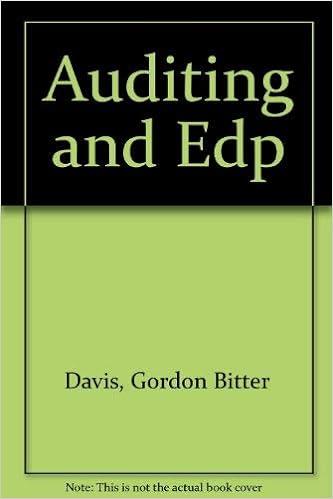Question
The U.S. government authorizes private contractors to audit bills paid by Medicare and Medicaid. The contractor audits a random sample of paid claims and judges
The U.S. government authorizes private contractors to audit bills paid by Medicare and Medicaid. The contractor audits a random sample of paid claims and judges each claim to be either fully justified or an overpayment. Here is a 2 2 table that summarizes data from one such audit. (One of the authors served as a statistical consultant in connection with this audit. For reasons of confidentiality we cannot identify the health care provider.) For this audit, all claims were divided into two sub-populations according to amount of the claim, small or medium. Two simple random samples were chosen, 30 small claims and 30 medium claims. We want to answer the question, Does the chance that a claim is judged to be an overpayment depend on the size of the claim?Of the 30 small claims, 14 were judged to be overpayments; of the 30 medium claims, 8 were judged to be overpayments. Our research question is this: Does the chance that the claim is judged to be an overpayment tend to differ by the size of the claim? A statistics student decides to use the Two Proportions applet to find a p-value to investigate whether there is an association between the size of a claim and whether it is judged to be an overpayment. Here is the output:
The above graph is a histogram of 1,000 possible values of difference in proportion of claims judged to be overpayments between small- and medium-sized claims. The graph centers at 0 because:
If the null hypothesis is true, there is no difference in the two probabilities of overpayment.
The observed statistic value is 0 in this simulation.
The mean is slightly above zero, so the student rounded to make the graph.
This is a random process, and that is the result that would occur if the alternative hypothesis is true.
The p-value is computed to be 0.184. What does this mean?
There is a 0.184 chance of getting a difference in proportions of 0.20 (the value of the statistic) or larger, or 0.20 or smaller, if the probability a claim is judged to be an overpayment is the same for small and medium claims.
The mean of the size of the claims under observation is 0.184.
The probability a claim is judged to be an overpayment is 0.20 (the value of the statistic) greater for same claims than for large claims.
There is a 0.184 chance of a claim being judged to be an overpayment.
Calculate an appropriate standardized statistic and interpret the standardized statistic in the context of the study.
(0.20 0)/0.125 = 1.6. The statistic is approximately 1.6 standard deviations from the mean of the null distribution.
(0.20 0.005)/0.125 = 1.56. The statistic is approximately 1.56 standard deviations from the mean of the null distribution.
(0.12 0.005)/0.125 = 0.92. The statistic is approximately 0.92 standard deviations from the mean of the null distribution.
(0.12 0)/0.125 = 1.96. The statistic is approximately 0.96 standard deviations from the mean of the null distribution.
The p-value and standardized statistic both lead you to the same conclusion.
True
False
Using the 2SD method, find a 95% confidence interval for the parameter of interest.
0.184 x 95% = 17.48%
0.20 0.125 2 or (0.05, 0.45)
95% (0.05, 0.45)
(0.48, 0.32)
The conclusion from using the p-value or the standardized statistic is consistent with the finding from the 95% confidence interval because ( 95, 0, 0.20) is in the interval, meaning that it (is plausible, is not plausible) that there is no difference in the probabilities.
Step by Step Solution
There are 3 Steps involved in it
Step: 1

Get Instant Access to Expert-Tailored Solutions
See step-by-step solutions with expert insights and AI powered tools for academic success
Step: 2

Step: 3

Ace Your Homework with AI
Get the answers you need in no time with our AI-driven, step-by-step assistance
Get Started


